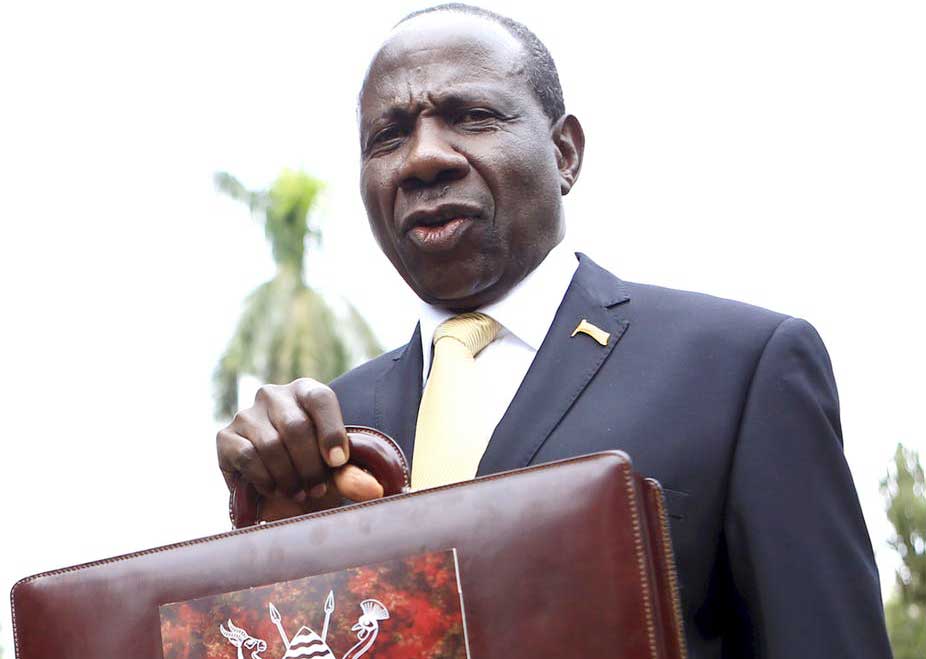The stock of total public debt has grown from US$ 10.74 billion at end June 2018 to US$ 12.55 billion (Shs46.36 Trillion) by end June 2019, Debt Sustainability analysis report 2018/19 by ministry of Finance, Planning and Economic Development has revealed.
Of this, external debt was recorded at US$ 8.35 billion (Shs30.85 Trillion), while domestic debt was US$ 4.2 billion (Shs15.51Trillion).
This represents an increase in nominal debt to GDP from 34.8% in June 2018 to 36.1% in June 2019.
“Measured in present value terms, the total stock of debt amounted to 27.3% of GDP up from 25.8% the previous financial year,” the report reads in part, adding that nominal total public debt is projected to increase to 40.9% of GDP in FY2019/20, before peaking at 49.5% in FY2023/24.
This Debt Sustainability Analysis (DSA) finds that Uganda continues to be at low risk of debt distress, with public debt found to be sustainable over the medium to long term.
Despite this, the analysis identified a number of risks to the debt portfolio, including the slow growth of exports and the increasing debt service burden. Debt service as a percentage of revenue has increased over recent years, as a result of the increase in domestic debt (which is typically costlier) as well as less concessional external debt.
Uganda’s public debt has continued to rise in recent years, increasing to 36.1% of GDP in FY2018/19.
increase in debt levels is due to higher borrowing to finance Uganda’s development aspirations, with particular focus on transport and energy infrastructure.
“This DSA finds that Uganda’s debt remains sustainable with low risk of debt distress. However, the debt portfolio is faced with a number of vulnerabilities, including a high and increasing debt service burden. As at FY2018/19, debt service amounted to 22.4% of domestic revenue and 15.3% of the total budget, compared to 14.4% and 10.1% in FY2014/15, respectively,” the report says.
While the recent GDP rebasing has resulted into lower debt to GDP ratios, it has not improved the country’s ability to repay its debt.
“Borrowing decisions should therefore not be based upon just the ratio of debt to GDP, but rather increasingly be guided by the capacity to repay,” the report recommends.
Major risks to the debt outlook
The major risks to the debt outlook include: the slow growth and diversification of exports; the increased rate of debt accumulation, particularly on non-concessional terms; low tax revenues; the increase in domestic borrowing; and challenges in the project management cycle, which delay project benefits and often lead to cost overruns.
Finance Ministry headed by Matia Kasaija (pictured) as Minister says Government is cognizant of these risks, and is taking measures to mitigate them.
“A number of initiatives have been put in place to enhance the growth of exports, including the 2020 Coffee Roadmap aimed at increasing coffee production for export and the development of several industrial parks around the country to boost industrial output, some of which will be exported,” the report says.
In a bid to improve domestic revenue mobilization, it adds, Government has come up with the medium term Domestic Revenue Mobilization Strategy, whose implementation is expected to increase the tax to GDP ratio by 0.5 percentage points every year.
“Finally, Government has also instituted a number of public investment management reforms, including the development of a user manual for project development and appraisal, the preparation of an integrated bank of ready projects, as well as strengthening capacity in MDAs in project management in order to enhance efficiency in project implementation,” the report says.






